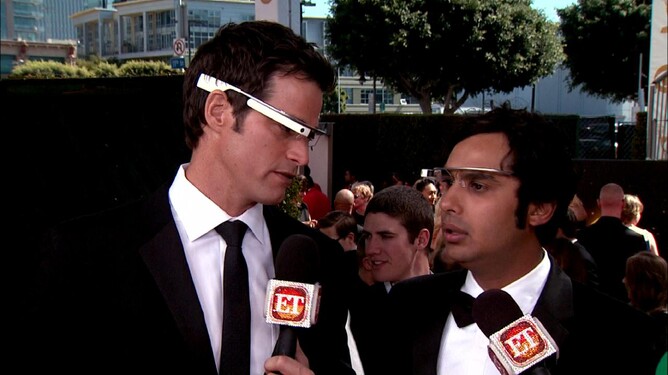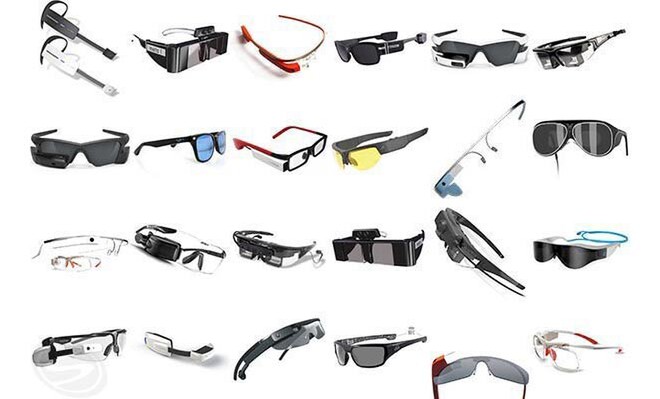Dave Lee, the BBC's North America technology reporter pronounced 3DTV as finally dead this week. This followed reports from LG and Sony who have stopped making 3D TVs hot on the heels of Samsung who made the move last year.
What's interesting about the report is the analysis that one of the key drivers for the failure of 3D TV, was that wearing the glasses makes you look…well…a bit silly really. No surprises there, then!
It's a great example of why Human-Centred Design has to be integral right from the start and continue to be so, throughout the process of developing new products. Technology has to make sense in the context in which people find themselves in or it will not succeed.
This is why we are thinking really hard about the future of augmented reality (AR) which is a technology that offers some amazing opportunities, but often requires users to wear a special pair of glasses or other form of eyewear.
So why do we think AR glasses are any different from 3D glasses? Good question. Let me explain.
Most of us will be familiar with the problems that the Google Glass experiment experienced. It's weird to talk to someone who has something obscuring eye contact. And we feel uncomfortable knowing they could be recording the conversation or even worse reading their emails because they're bored!
Recent advances in AR technology, specifically holographic waveguides, have spawned a generation of glasses that can project the image onto the lens itself without the need for a separate screen. This allows wearers to maintain an uninterrupted view through the lens and the augmented image appears to float in space in front of them.
What's interesting about the report is the analysis that one of the key drivers for the failure of 3D TV, was that wearing the glasses makes you look…well…a bit silly really. No surprises there, then!
It's a great example of why Human-Centred Design has to be integral right from the start and continue to be so, throughout the process of developing new products. Technology has to make sense in the context in which people find themselves in or it will not succeed.
This is why we are thinking really hard about the future of augmented reality (AR) which is a technology that offers some amazing opportunities, but often requires users to wear a special pair of glasses or other form of eyewear.
So why do we think AR glasses are any different from 3D glasses? Good question. Let me explain.
Most of us will be familiar with the problems that the Google Glass experiment experienced. It's weird to talk to someone who has something obscuring eye contact. And we feel uncomfortable knowing they could be recording the conversation or even worse reading their emails because they're bored!
Recent advances in AR technology, specifically holographic waveguides, have spawned a generation of glasses that can project the image onto the lens itself without the need for a separate screen. This allows wearers to maintain an uninterrupted view through the lens and the augmented image appears to float in space in front of them.
Whilst this is a much more natural way to present the augmented graphics, it still requires the user to wear something that contains a fair amount of technology. The best glasses available have very thin lenses, but still can't avoid the fact that there is a block of technology that has to sit somewhere. Most of them have either a lump on the arms of the glasses, an enclosure over the top of the frame or a completely separate box that the user wears somewhere around their body.
So how do you avoid looking like a plonkAR?
Simply put, we think it is about matching the eyewear to the use case. We are not convinced by the idea of a pair of AR glasses for general use because they will probably always look a little bit odd. Decades of design and material science have gone into providing people with the choice of wearing glasses that are minimally intrusive. The benefits of AR will have to be significant to persuade people to compromise on that.
So how do you avoid looking like a plonkAR?
Simply put, we think it is about matching the eyewear to the use case. We are not convinced by the idea of a pair of AR glasses for general use because they will probably always look a little bit odd. Decades of design and material science have gone into providing people with the choice of wearing glasses that are minimally intrusive. The benefits of AR will have to be significant to persuade people to compromise on that.
Instead we see the sweet spot for AR eyewear to be in situations where people are already familiar with wearing something a bit different; safety goggles, cycling visors, surgical masks and so on.
That's why we have opted to develop AR enabled eyewear for swimming and for an extreme sports applications. These are situations in which people accept that the things they put in front of their eyes do much more than correct their vision and make a fashion statement. And therefore, the context already exists for wearing something that is not trying to emulate a minimalist pair of glasses.
Equally, it is not unusual in these situations to need to interact with some buttons or a gesture control input. People are familiar with interacting with a GoPro mounted to their helmet and it doesn't seem odd. Compare that with the awkwardness of repeatedly stroking the side of your glasses in the middle of a conversation to hide notifications that keep popping up.
There is much still to be done to develop smart glasses in terms of their technical capabilities but we believe the true success of AR will come down to providing people with an enhanced experience without increasing the social awkwardness of using it.
Equally, it is not unusual in these situations to need to interact with some buttons or a gesture control input. People are familiar with interacting with a GoPro mounted to their helmet and it doesn't seem odd. Compare that with the awkwardness of repeatedly stroking the side of your glasses in the middle of a conversation to hide notifications that keep popping up.
There is much still to be done to develop smart glasses in terms of their technical capabilities but we believe the true success of AR will come down to providing people with an enhanced experience without increasing the social awkwardness of using it.
By Mark Hester

